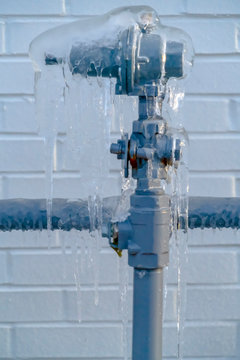Preventing Pipes from Freezing: Effective Strategies
Preventing Pipes from Freezing: Effective Strategies
Blog Article
In this article down the page you can find a good deal of first-rate expertise in relation to Preventing and dealing with frozen pipes.

Winter can wreak havoc on your pipes, specifically by freezing pipelines. Right here's just how to avoid it from occurring and what to do if it does.
Intro
As temperatures decline, the risk of icy pipelines increases, potentially bring about expensive repair work and water damage. Comprehending exactly how to stop icy pipelines is vital for house owners in chilly environments.
Prevention Tips
Protecting at risk pipes
Wrap pipes in insulation sleeves or make use of heat tape to safeguard them from freezing temperatures. Concentrate on pipelines in unheated or external areas of the home.
Home heating methods
Maintain indoor areas sufficiently heated up, particularly locations with pipes. Open up cupboard doors to enable cozy air to flow around pipes under sinks.
Exactly how to identify frozen pipes
Try to find reduced water circulation from faucets, uncommon smells or sounds from pipes, and noticeable frost on revealed pipes.
Long-Term Solutions
Architectural adjustments
Think about rerouting pipes far from outside walls or unheated areas. Include extra insulation to attics, basements, and crawl spaces.
Updating insulation
Invest in premium insulation for pipes, attic rooms, and wall surfaces. Proper insulation aids maintain consistent temperatures and decreases the risk of icy pipelines.
Protecting Outdoor Pipes
Yard hose pipes and exterior faucets
Detach and drain garden pipes before winter season. Install frost-proof spigots or cover exterior taps with insulated caps.
Comprehending Icy Pipelines
What creates pipelines to freeze?
Pipelines ice up when revealed to temperatures listed below 32 ° F (0 ° C) for prolonged periods. As water inside the pipes freezes, it expands, putting pressure on the pipe wall surfaces and potentially creating them to rupture.
Risks and problems
Icy pipes can bring about water supply disturbances, home damages, and expensive repairs. Ruptured pipes can flooding homes and trigger extensive architectural damage.
Signs of Frozen Water Lines
Determining icy pipelines early can stop them from rupturing.
What to Do If Your Pipelines Freeze
Immediate activities to take
If you believe icy pipelines, maintain taps open up to ease pressure as the ice thaws. Utilize a hairdryer or towels taken in hot water to thaw pipes slowly.
Verdict
Stopping icy pipes calls for positive steps and fast reactions. By comprehending the causes, indications, and preventive measures, house owners can safeguard their plumbing throughout cold weather.
5 Ways to Prevent Frozen Pipes
Drain Outdoor Faucets and Disconnect Hoses
First, close the shut-off valve that controls the flow of water in the pipe to your outdoor faucet. Then, head outside to disconnect and drain your hose and open the outdoor faucet to allow the water to completely drain out of the line. Turn off the faucet when done. Finally, head back to the shut-off valve and drain the remaining water inside the pipe into a bucket or container. Additionally, if you have a home irrigation system, you should consider hiring an expert to clear the system of water each year.
Insulate Pipes
One of the best and most cost-effective methods for preventing frozen water pipes is to wrap your pipes with insulation. This is especially important for areas in your home that aren’t exposed to heat, such as an attic. We suggest using foam sleeves, which can typically be found at your local hardware store.
Keep Heat Running at 65
Your pipes are located inside your walls, and the temperature there is much colder than the rest of the house. To prevent your pipes from freezing, The Insurance Information Institute suggests that you keep your home heated to at least 65 degrees, even when traveling. You may want to invest in smart devices that can keep an eye on the temperature in your home while you’re away.
Leave Water Dripping
Moving water — even a small trickle — can prevent ice from forming inside your pipes. When freezing temps are imminent, start a drip of water from all faucets that serve exposed pipes. Leaving a few faucets running will also help relieve pressure inside the pipes and help prevent a rupture if the water inside freezes.
Open Cupboard Doors
Warm your kitchen and bathroom pipes by opening cupboards and vanities. You should also leave your interior doors ajar to help warm air circulate evenly throughout your home.

Hopefully you liked our post on How to Prevent Your Pipes From Freezing. Thanks so much for spending some time to browse our blog post. Feel free to pause to distribute this blog posting if you enjoyed it. I thank you for your readership.
Schedule Estimate Report this page